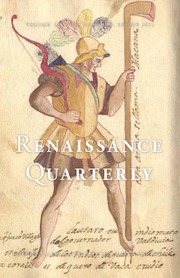The coda to Katherine Schaap Williams's Unfixable Forms tells how the author was encouraged by reviewers to insert a personal motivation into the book's introduction, an anecdote to explain their interest in this topic. In response, they contend that “if we care about texts and bodies, about performance and witnessing—in short, if we care about the early modern theatre—we should care about disability” (220). This assertion is borne out by the text, which supplements the flourishing field of early modern health humanities with a new attention to theoretical grounding and the details of early modern performance.
As the title suggests, Schaap Williams focuses broadly on the continuous tension between fixity and unfixability, on the “contradiction between social construction and intractable materiality” that troubles both the process of acting and any attempt to pin down who is disabled, and, by extension, who is able (218). Nobody, as the book's introduction points out, seems quite able to agree on exactly what disability actually means or how it comes to mean at all. This indeterminacy, argues the author, renders disability—and its theatrical cousins, monstrosity, ugliness, sickness, and debility—endlessly productive. In the chapters that follow, Schaap Williams reconsiders disability's productivity in numerous ways, always returning to questions of what disability elides or makes visible and what is achieved by the slipperiness of disability as a category.
One thing that putting disability on stage did was to illuminate or influence the lives of actual disabled people. In the book's second chapter, for instance, Schaap Williams considers the lame soldier, whose difference is ideally made invisible in medical interventions, but remains hyper-visible in stage representations. The insistent presence of lameness on stage spotlights the consequences of state-mandated conflict and the inadequacy of provision for returning soldiers. Chapter 3 shows how the feigning of disability on stage had consequences for disabled vagrants, who were continually suspected of faking their impairments.
The main project of this book, however, is to consider in more abstract terms how disability and theatricality intersect with and complicate one another. Of particular interest—and the subject of the book's first chapter, on Richard III—is the relationship between the fixed/unfixable disabled body and the body of the actor. Just as the disabled body is uncertainly positioned in causative relation to moral turpitude, the early modern actor's body is understood as both feigning an affective state for the benefit of their audience and also being vulnerable to the affects they put on. “Playing the changeling,” as the book later puts it, is a dangerous activity, the hazard of which reveals the contingent nature of disability itself (152). Elsewhere, Schaap Williams uses the example of Cripple in The Fair Maid of the Exchange to show how disability becomes a cipher for the social or theatrical actor's ability to assume different personas, even as the disabled person themself is excluded from this shapeshifting. Cripple is, therefore, “crucial to a theatrical economy of exchange in which he cannot participate” because of the “kaleidoscopic,” generative potential of his prosthetized body (106). Here, as in later chapters on ugliness and convulsions, Schaap Williams finds that plays unfix a relationship between signifier and signified (crippledom and helplessness, ugliness and vice, palsies and old age) only to later fix it again, but differently. The theater, it seems, is an environment in which the expected meanings of bodies are repeatedly teased out and turned over, but not entirely upended.
Unfixable Forms is dense and detailed to a fault, engaging closely with dramatic and disability theorists (its engagement with the issue of “cripping up” is especially noteworthy) and drawing on a broad range of plays and other texts from the canonical to the obscure. It often doubles back on itself to advance different readings of the same theatrical moment, and, as such, it may prove heavy going for readers without prior grounding in this material. Nonetheless, its close attention to the contradictions and instabilities inherent in the material it examines is also its strength. Considered and often circular in character, Unfixable Forms returns repeatedly to worry at the same knots: the relationship between formal theater and everyday theatricality, between actor and character, and between body and identity.



